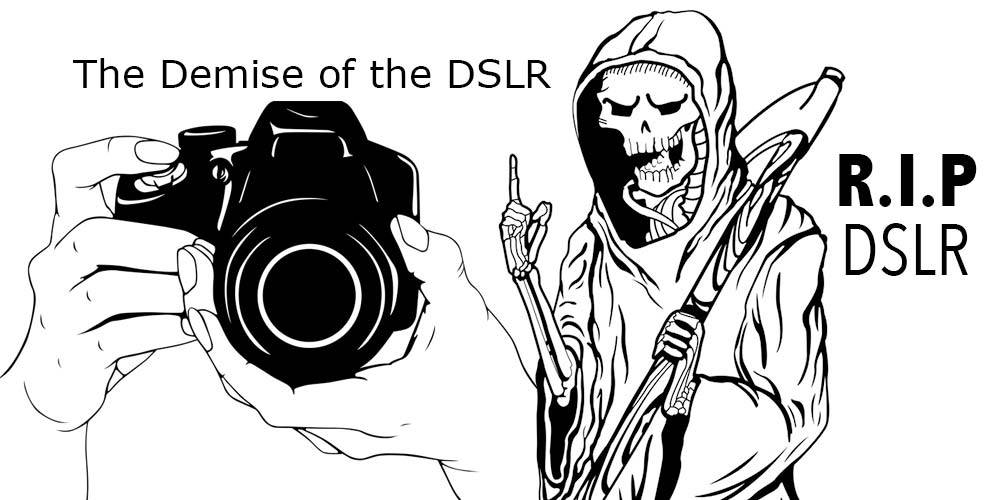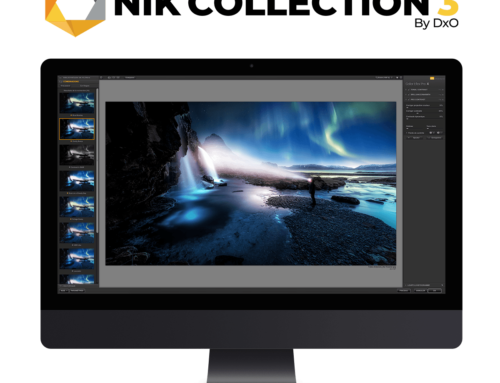The Advantages and Disadvantages of DSLR
Let’s start with the advantages of the DSLR camera system. The SLR system has been around for a long time, getting close to one hundred years. In this time it has had a lot of research money poured into it by the camera manufacturers to ensure that their cameras were better than their competitors’ cameras. This research has meant that DSLR cameras are now light years ahead of where the original SLR cameras began.
Some of the advantages of a DSLR camera include:
- An established and an extensive range of lenses;
- Fast autofocus systems;
- Large sensors which improve image quality;
- Large batteries;
- Huge range of accessories;
- Capable of rapid shooting because of a large buffer;
- Twin slots for memory cards;
- Good low light performance.
These types of cameras, while magnificent, do have a few disadvantages:
- Weight! They are heavy. A large DSLR, a few lenses, flashguns and batteries in a camera bag can make you feel as if you are carrying a small child around with you all day. Even the DSLR with a single lens is heavy to carry around all day;
- Bulk! Not the same thing as weight;
- Image. Not image quality but the image portrayed by the photographer. This is a double-edged sword. A lot of photographers state that they would not move over to mirrorless because they feel that they would not be regarded as a “proper” photographer by their peers or clients. Conversely, many photographers feel that a large DSLR intimidates clients and makes them more conspicuous in some circumstances;
- No electronic viewfinder (EVF). To many, this may sound like an odd thing to list as a disadvantage. The optical viewfinder of a DSLR is considered by many to be an advantage. I’ll discuss this below.
The Advantages and Disadvantages of Mirrorless
Now let’s take a look at the advantages and disadvantages of the mirrorless system. One thing that I must make you aware of is, the mirrorless technology is advancing at a mind blistering pace and this list will be out of date shortly. It is this rate of research and development that lies at the heart of my case regarding the demise of DSLR cameras. But more on that later.
Some of the advantages of a mirrorless camera include:
- Size and weight. Mirrorless cameras do not need to have a large mirror and prism housed in their body. This makes them considerably lighter and smaller. It’s this lack of size that leads some to have a personal image problem with mirrorless;
- They have an electronic viewfinder EVF;
- No “mirror-slap”. The mirror inside a DSLR can cause some vibration of the camera which becomes evident when taking photographs with a long exposure or when using a long lens. Click here to watch a video demonstration;
- Less conspicuous. Mirrorless cameras are ideal for street photography and for getting candid shots at events;
- Far more autofocus points – several hundred as opposed to a couple of dozens;
- Fast shutter speeds. The latest mirrorless cameras are capable of shutter speeds in excess of 10 frames per second (fps). For example, the Sony a9 is capable of 20 fps using its electronic shutter;
- Facial recognition. This helps with focusing and automatic white balance. Beleive it or not, facial recognition can actually be taught to favour some faces over others. This helps to focus on the important person in the crowd;
- Focus Peaking. This focusing aid allows the photographer to see a colour highlight to the areas of the image that are in focus. It is used to aid with manual focus and is updated in real-time in the EVF or LCD screen;
- Real-time preview of long exposure photography. Even with a 10 stop ND filter on the lens, you can see the image in the EVF or on the LCD screen. This allows you to focus and compose the shot as well as accurately gauge exposure time.
OK, that’s enough of the advantages. The list is changing all the time as developments are released. Let’s mention the disadvantages:
- Battery life. The batteries in mirrorless cameras are a lot smaller than their DSLR counterparts and are therefore not as powerful. However, this is improving all the time and the new Sony batteries (Sony NP-FZ100), are now on par with DSLR batteries;
- Autofocus speed. While this is still true for many mirrorless cameras, they are now catching up and overtaking;
- Image. As I mentioned above, some photographers feel that a mirrorless camera looks like a toy and they wouldn’t be taken seriously as a photographer. Image is everything to some people;
- Choice of lenses. For now, mirrorless cameras do not have the same extensive choice of lenses. Because the sensor in a mirrorless camera is closer to the back of the lens, they cannot use the same lenses as have been used for years with SLR and DSLR cameras. You can make use of the DSLR lenses with the aid of adaptors but there are limitations with those. Each manufacturer of mirrorless cameras do make their own lenses but it will take them a while to catch up with the volume of lenses available for DSLR cameras. Recently, both Sigma, Tamron and Tokina have started to make lenses for mirrorless cameras. Again, it won’t be long until the choice of lenses is on a par with DSLR
The final, and in my opinion the biggest disadvantage of the mirrorless system is, neither Nikon nor Canon have a full-frame mirrorless camera.








I think you definitely make a valid point here. In fact I took the brave decision to move over to mirrorless several weeks ago and am now using the Sony Alpha range. A decision I don’t regret (as yet). I was fed up carrying my heavy DSLR around with me. Your article certainly makes for an interesting read. I’ll be curious to see how things develop (no pun intended) over the coming years.
Look forward to reading any future updates
Irene, it may not even be the coming years. In 9 months from now, the debate will be in full swing.
really tempted by the A7iii to go mirrorless…
Me too.
Outstanding images can be caught.with a decent dslr camera mirrorless has lots of great features but if you cant.master dslr dont waste your money strong marketing is driving photographers to discard superb camera systems try before you buy if you can
I’m still trying to master my Nikon and enjoying every minute
Can’t stand mirrorless. Too small, fiddly and the EVFs are awful.
I use both, regularly. I find the mirrorless delivers better quality, cleaner images. I was reluctant at first, I need a smaller camera to carry when shooting mountain’s. I can only say from my own experiences that since I’ve been using the Sony A7r2 I’ve not gone back to using my Nikkon. Probably end up selling. Just an FYI, outstanding images can be captured on any system. The EVF is brilliant, may not be so good in pitch black but still it really is a minor trade off for the ability to use ANY lens from any system. Looking at the road map for the big three I think there will be a push develop the tech. Let’s no forget that 20 years ago everyone scoffed at digital.
DSLR still the best camera for Aurora photography.
No one has mentioned is that having an optical viewfinder is pretty much essential to anyone over 50 who wants to be able to clearly frame a shot without having to wear glasses. My mirrorless camera is more of a lottery, whereas when I use my DSLR I know what the picture will look like before I check it on my PC.
While I like the idea of mirrorless as it’s lighter, you need a really faster viewfinder otherwise you get camera delay between seeing the shot and capturing it. Unless you pay a lot of money by the time you press GO the shot has gone. Fine for scenes but for capturing the moment in action shots such as sport you’ve either got to be very predictive or lucky. Give it a few more years perhaps.
Mirrorless systems are pushing the boundaries of photography with every release of a camera remember when digital first came into being photographers came across from film kicking and screaming now its happening again ,longer lenses for sports and the next generation of mirrorless cameras from what ever manufactures will be tipping the balance Cannon are developing mirrorless , Hassleblad have mirrorless , Fuji, I think the writing is on the wall unless there is a manufacturer that develops something outstanding for digital but how far can one technology go before change
Martii, the parallels that you draw with the transition from film to digital are spot on. Camera technology is being shackled by the mirror and prism.